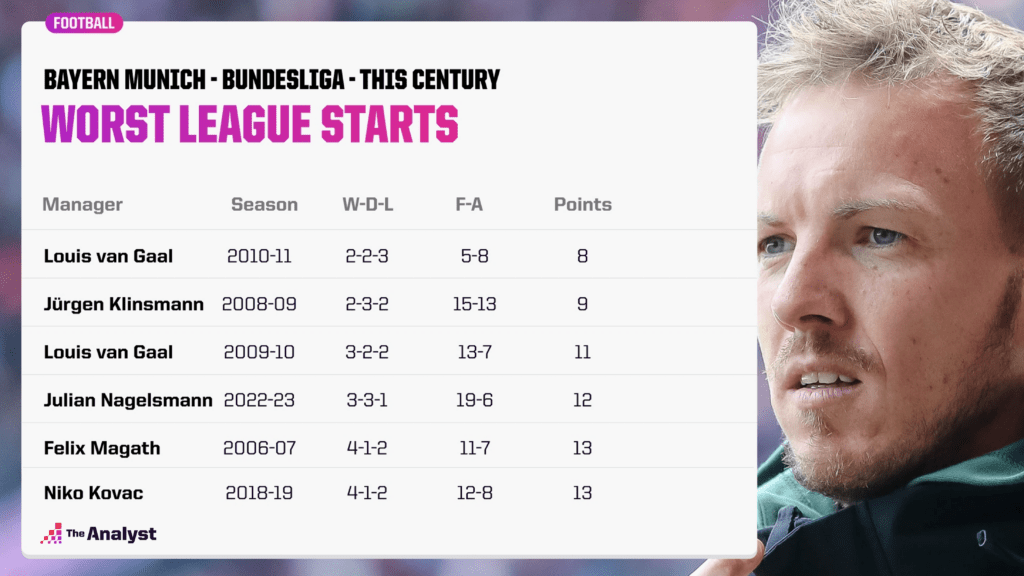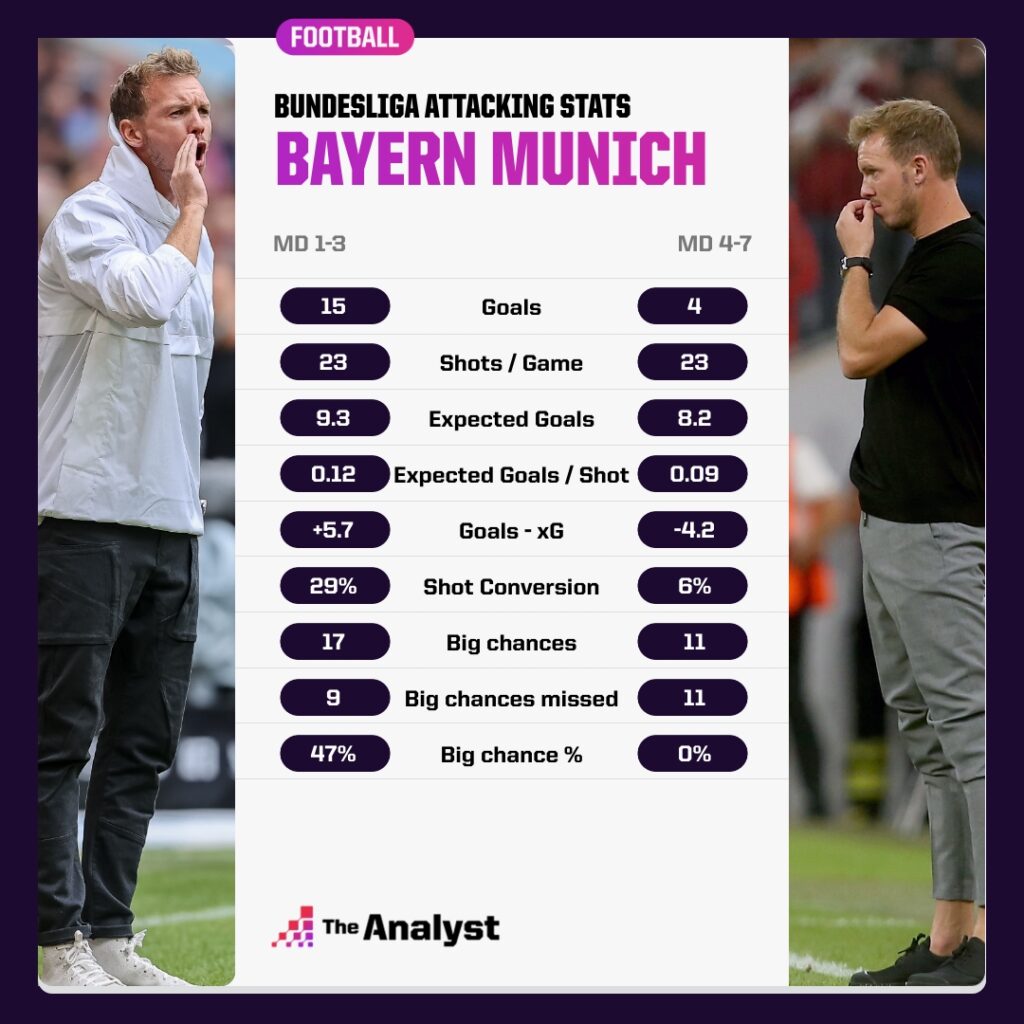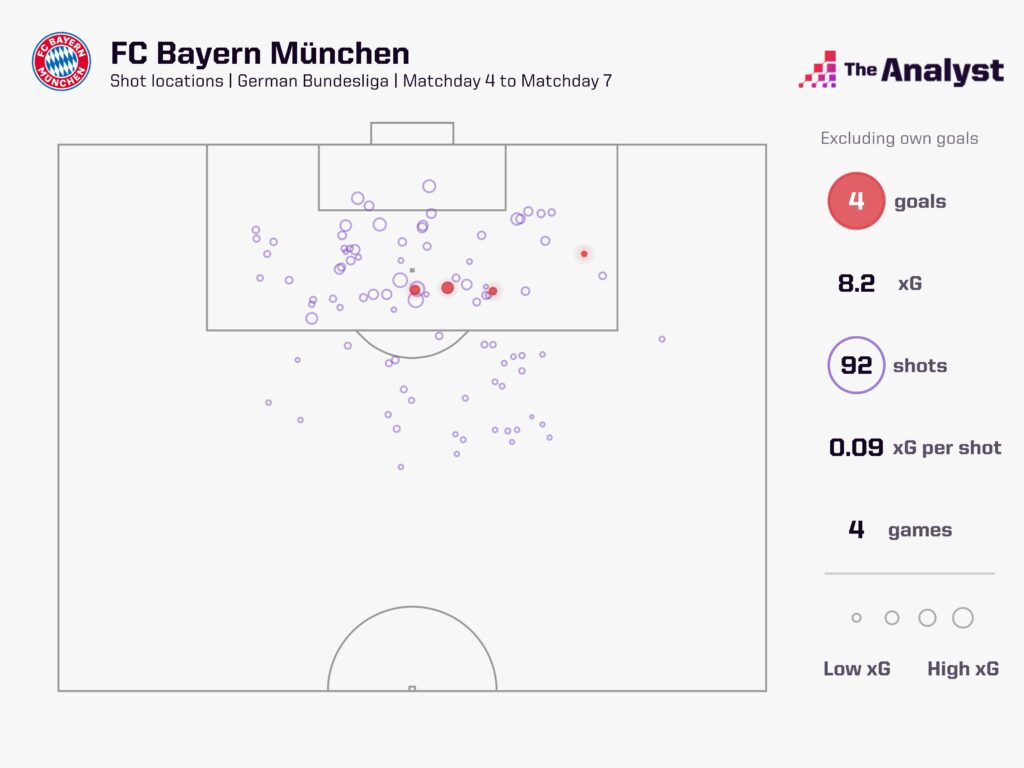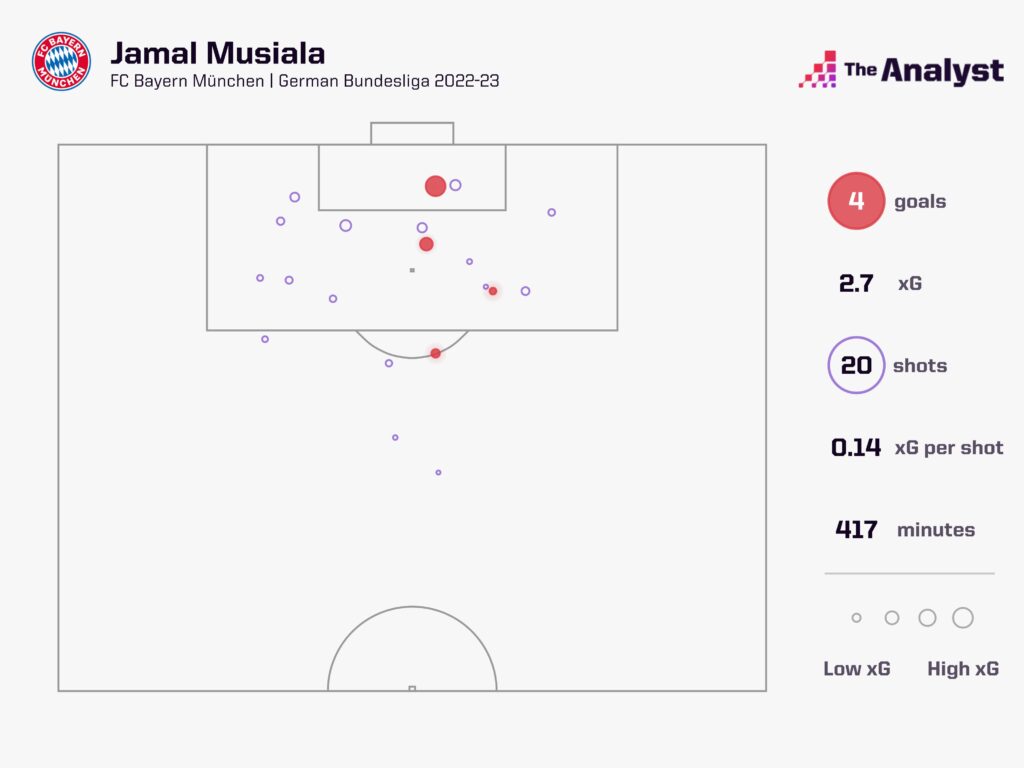Next weekend sees the return of the German “Klassiker” between Bayern Munich and Borussia Dortmund. Both clubs lost their outstanding goalscorers over the summer, but while Borussia Dortmund appear to be managing in the absence of Erling Haaland, sitting in second place over the international break, Bayern now look to be struggling with Robert Lewandowski’s absence after an outstanding start to the season.
The scene was symbolic of Bayern Munich’s recent league games. For 90 minutes, his colleagues had tried in vain to score, but goalkeeper Manuel Neuer had the last and arguably biggest chance of the game. He met a corner kick with a powerful header, but one that could not beat the outstanding Rafal Gikiewicz. The full-time whistle sounded shortly afterwards and after 87 consecutive Bundesliga games with a goal – a run that stretched all the way back to a 0-0 draw against RB Leipzig in February 2020 – Bayern’s scoring was streak snapped.
Even more serious than the end of their scoring streak was the fact that Bayern were now winless in four consecutive Bundesliga games for the first time in over 20 years.
After enjoying the best start of any team in Bundesliga history after three games with nine points and a positive goal difference record of +14, Bayern are suddenly looking at their weakest start to a season in 12 years after 12 points from seven games. What’s happened?

15 Goals After Three Games: A New Bundesliga Record
The big question for the German champions this season was how to absorb the loss of the outstanding Robert Lewandowski, who moved to Barcelona after eight years in Munich. Particularly as no direct replacement for him was signed. Instead, with the likes of Sadio Mané, who arrived from Liverpool, the burden of scoring goals was to be distributed among many different players.
In the first three games of the season – a 6-1 win against Frankfurt, a 2-0 win at home against Wolfsburg and a 7-0 win at Bochum – this plan seemed to work out perfectly. Never before in the history of the Bundesliga had a team scored as many goals in the first three games of the season.
Nine different players were on the scoresheet for Bayern, including three goals for new signing Mané. No Lewandowski. No dramas.
But then came the match against Gladbach. Goalkeeper Yann Sommer had a performance for the ages, making 19 saves – the most of any goalkeeper in a top five European league game in recorded history. The Swiss stopper casually prevented 3.3 expected goals in a single match.
It was only thanks to Leroy Sané’s equalizer shortly before the end that Bayern managed to avoid their first defeat of the season. In the aftermath, the question of Lewandowski and the lack of a true number nine arose for the first time, and the subject droned on ever louder with the following three winless games.
From Overperformers to Underperformers
If you compare Bayern’s attacking statistics from the first three games of the season with those from the last four, you see a dramatic slump in shot conversion. While Bayern had the second-best shot conversion rate in the league after Bremen (30%) across the first three match days, it’s the second lowest after Bochum (just under 6%) across the last four match days. In the last four games, Bayern missed all 11 of their big chances, having previously scored eight of 17.

However, the truth seems to lie somewhere in the middle. On the first three matchdays, Bayern were the Bundesliga’s biggest overperformers, scoring 5.7 goals more than their expected goals output would suggest. This has evened out considerably in the last four games with Julian Nagelsmann’s side underperforming their xG value by 4.2 goals, more than any other team.
Across the season as a whole, the Munich team have scored 19 goals from 17.5 expected goals, so they’re pretty much bang in line with expectation.

Who Is the Heir to Lewandowski?
The fact that Lewandowski got off to the dream start at Barcelona hasn’t helped matters. The Pole has scored eight goals in his first six league games.
Comparing the numbers of Bayern’s attacking players from this season with those of Lewandowski from last season, a few interesting insights crop up. The Pole averaged fewer shots per 90 than, Leroy Sané and had fewer touches in the box per 90 on average than Jamal Musiala or Serge Gnabry. But Lewandowski’s great strength, as it has always been, was being in the right place at the right time. He averaged 1.1 expected goals per game and converted in line with that. Both those figures are higher than anyone else has managed thus far in 2022-23.
The closest to that xG per 90 value is new signing Mané, who also has almost the same number of big chances per 90 minutes as Lewandowski in 2021-22. But the Senegalese forward has been increasingly unfortunate in his actions of late and has not had a big chance in the last three match days.
Musiala As Current Top Scorer
If the main focus is on the shot conversion, Jamal Musiala emerges as the elementary answer to the Lewandowski question. Despite being only 19 years old, the German international is Bayern’s top scorer this season with four goals. He’s averaged almost one goal per 90 minutes so far, almost matching Lewandowski’s tally in 2021-22. A large part of this has been his outstanding shot conversion rate. At 33%, it’s the highest of any Bundesliga player this season among all players to have attempted 20 or more shots.

What Musiala still needs to work on, and what’s preventing him from scoring even more goals, is that the youngster is still taking shots with defenders in close proximity. Eight of his 20 shots have been blocked by an opponent this season – no other player has as many blocked attempts.
Nevertheless, if Musiala can maintain his current shooting efficiency and Sané and Mané, in particular, manage to overcome their recent finishing slumps, Bayern should soon find a way out of their recent goal crisis. If that doesn’t happen though, they might need to invest in a ‘true’ number nine come January.
Enjoy this? Subscribe to our newsletter to receive five stories each Friday.
